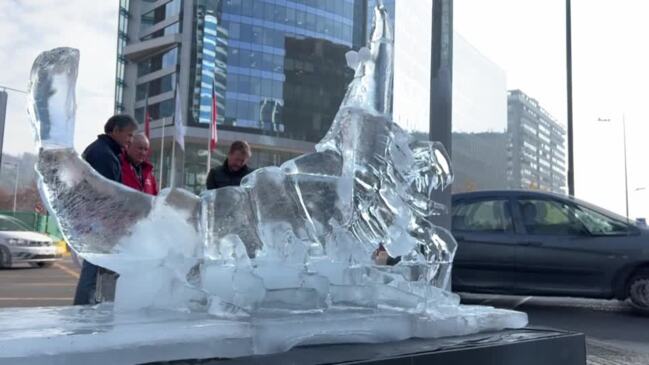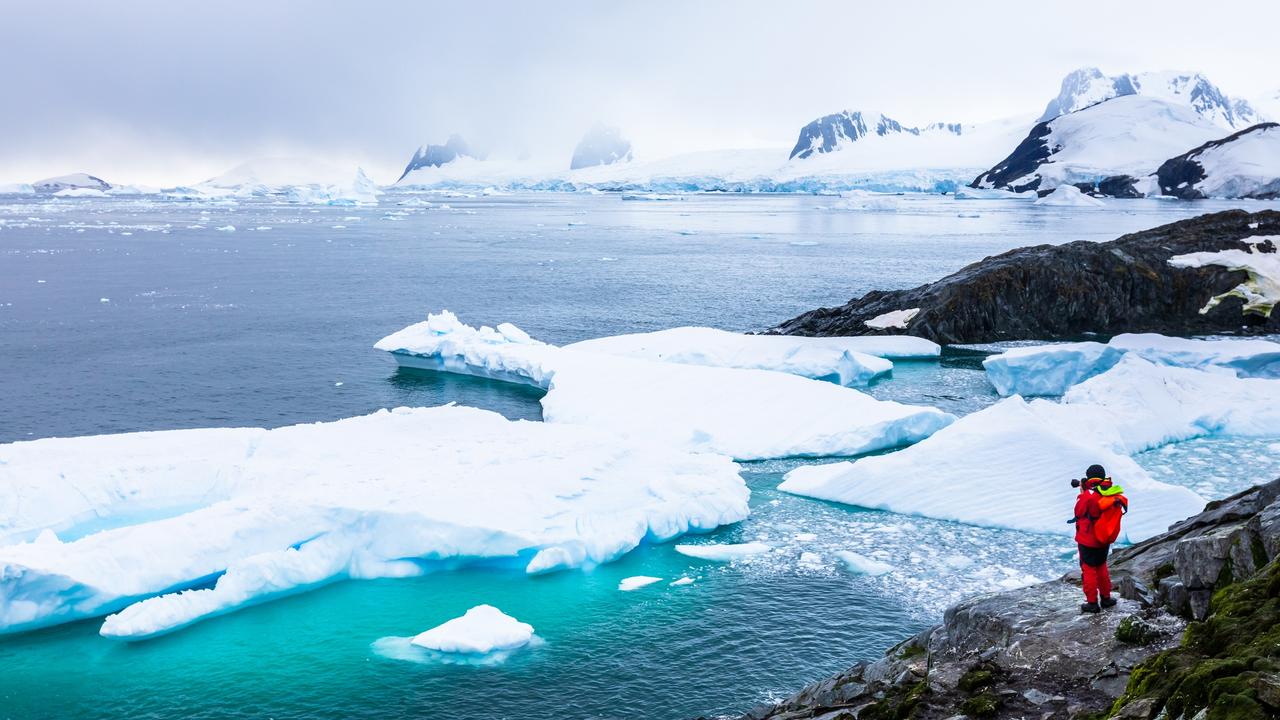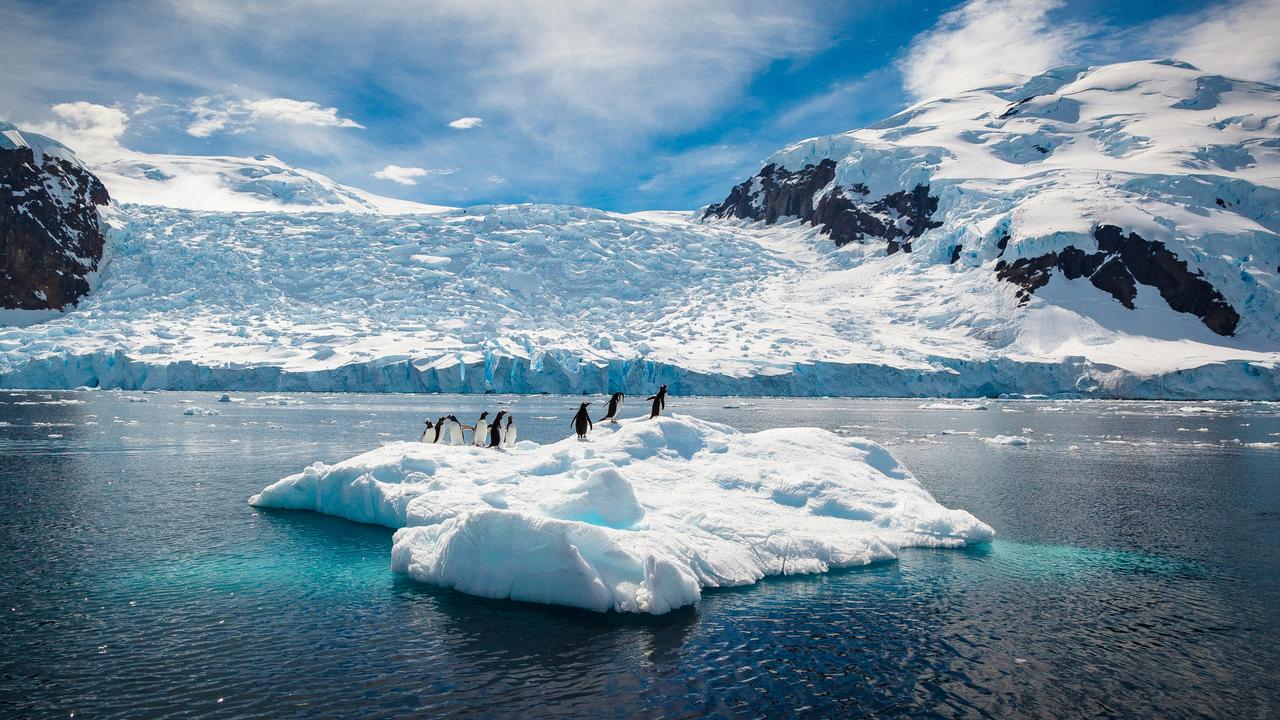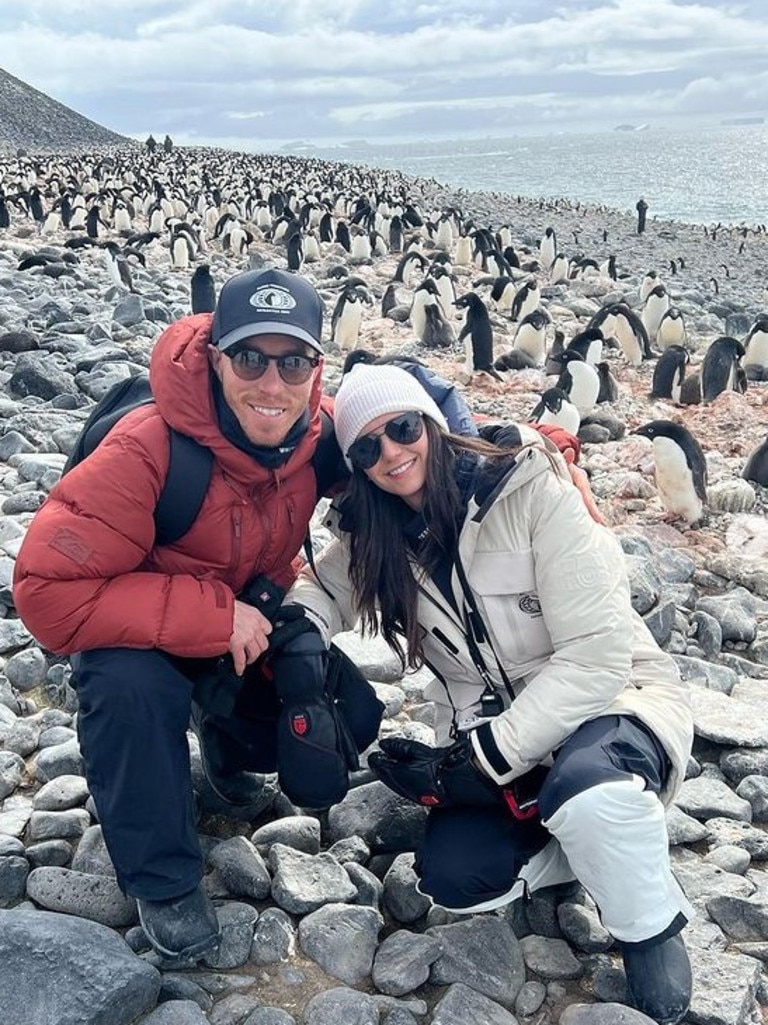Big reason people want rapidly rising tourism to Antarctica stopped
There is a big reason people are fighting for Antarctica to be dumped from bucket lists as the mostly pristine continent grows rapidly in popularity.

If you thought you had been seeing and hearing a lot more about Antarctica this year than ever before, you are not alone.
Tourism to the southernmost continent is rapidly rising – and so are fears of “overtourism”.
A record number of people from across the world visited in the 2022-2023 season, which is during the Australian summer.
Statistics from the International Association of Antarctica Tour Operators show more than 100,000 people headed there, mostly on cruise ships, which was about a 40 per cent jump on the season before the pandemic. About 8 per cent were Australians, while more than 50 per cent were from the US.
From everyday people, to influencers and celebrities, Antarctica has become a top bucket list trip.
The appeal for most travellers is the untouched wilderness – the undisturbed wildlife and landscapes, and lack of people.
But it is feared this surge in tourism threatens the exact thing that draws people there.

Sara Clemence, a freelance journalist and author of Away & Aware: A Field Guide to Mindful Travel, wrote in a piece for The Atlantic this week that Antarctica should taken off bucket lists and left alone.
And she is not the only one to advocate for that scenario as tourist numbers soar.
Antarctica is often associated with the idea of “last chance tourism”. That travellers need to see it before it disappears.
It is said within the industry that commercial tourism increases recognition of the region’s importance and travellers return as “ambassadors” for its protection.
However, it is also argued that tourism increases more tourism, and could actually hasten Antarctica’s disappearance.
Researchers say the environmental dangers include the increase of black carbon from cruise ship funnels, and more boots and clothes to carry invasive species into the vulnerable ecosystem (which will get worse as ice melts and creates new areas of bare earth).
There is also the problem of greenhouse gas emissions. One study printed in the Journal of Sustainable Tourism found that due to the continent’s remoteness, cruise ship tourists visiting the Antarctic created “especially high levels” up to about eight times higher per capita and per day than average international tourism trips.

One study in the journal Nature Communications found that each tourist between 2016 and 2020 was effectively melting around 83,000kg of snow.
Matthew Harris, a PhD researcher in climate and marine science in the UK, explained the “sobering” results of the study in a piece for The Conversation last year.
“In affected areas near human settlements on the Antarctic Peninsula, human-produced black carbon may be causing surface snow to melt by up to 23mm every summer,” he wrote.
He explained elevated levels of black carbon accelerate ice and snow melt.
“As human activity in Antarctica increases, so will the accompanying effects,” he said.
“Research on these real and potential harms provides vital information on how they might be best mitigated or avoided altogether.
“To minimise harm to wildlife and the environment, we need to ensure both research and tourism are carefully managed.”


Six academics at the University of Tasmania in Hobart, considered one of only a handful of gateway cities to Antarctica, penned a piece for The Conversation during this year’s record season.
They argued that the industry was well-run and over a third of all visitors never stand on the actual continent, but environmental impacts will grow along with tourism.
“In Antarctica, crowding, environmental impact and emissions are the most pressing issues,” they wrote.
“While 100,000 tourists a year is tiny by global tourism standards – Paris had almost 20 million in 2019 – visits are concentrated in highly sensitive ecological areas for only a few months per year.
“There are no residents to disturb (other than local wildlife), but by the same token, there’s no host community to protest if visitor numbers get too high.”
The Hobart-based academics warned tourists that “no trip south comes without environmental cost” and to use that knowledge to make decisions about their activities both in Antarctica and at home.

Who is keeping an eye on tourism?
There is the Antarctic Treaty System, which is a set of international agreements signed by countries with an interest in the Antarctic, including Australia.
It designates the continent as a “natural reserve, devoted to peace and science”.
Tourism operators based in these countries have to apply for permits and follow environmental regulations.
All Australian-based tour operators visiting Antarctica, and all operators visiting Australian Antarctic Territory, are subject to environmental impact assessments.
The Australian Antarctic Division makes it a condition that they give a full report of their activities on their return.
The IAATO is the peak industry group that manages Antarctic tourism and most tour operators are voluntary members. It sets out obligations for its members.
For the first time this year, tour operators had to submit seasonal fuel consumption data to help the IAATO understand the greenhouse gas footprint of its members in Antarctica and inform emission reduction targets.






